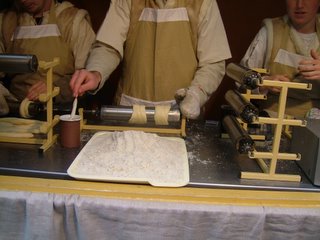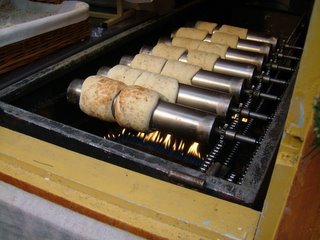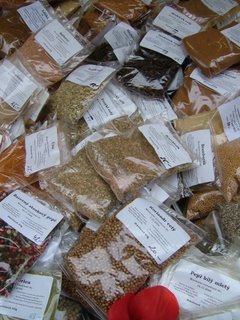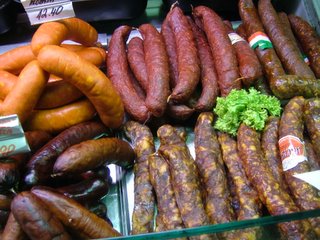I’ve recently started fixating on good, high-cocoa chocolates with unusual flavourings. Forget Terry’s Chocolate Orange – I want a bar full of exotic fruits, flower flavours and exciting spices. They’re increasingly popular at the moment; branches of Hotel du Chocolat are springing up all over the place, and Rococo Chocolates, NewTree and good old Green and Black’s are now supplying supermarkets. (Those after the ultimate posh chocolate experience should put in an order at l’Artisan du Chocolat, where flavours include banana and thyme, tonka bean and tobacco. The chocolates are expensive, but those I’ve had have been absolutely excellent – sadly, though, I have eaten the grand total of two of the things in my entire life. If I can get my hands on a box for Christmas, you’ll see them reviewed here.)
At the supermarket this week, I found myself scooping bars of chocolate into the basket like a woman possessed. Made to put most of them back by Dr Weasel, I held onto an organic bar of dark chocolate and cardamom from Rococo, and a bar of lavender and lime blossom milk chocolate from NewTree.
Rococo are based in Chelsea’s King’s Road, and have been producing organic chocolates of remarkably high quality for nearly 20 years. Luckily for you, they’ve discovered e-commerce and now ship worldwide, and some of their artisan bars and gift collections now appear in Waitrose. Their flower fondants are my very favourites, and have solidly replaced Charbonnel & Walker’s rose and violet creams in my affections. Always a sucker for good packaging design, I’m absolutely enchanted by Rococo’s wrappers, which use images from an 1850s French catalogue of chocolate moulds.
This cardamom artisan bar is, for me, about as good as dark chocolate gets. Cardamom has that same affinity with a bitter chocolate as it does with good, bitter coffee, and the 65% cocoa solids and high percentage of cocoa butter give the bar a beautifully clean snap when broken. The crisp, granular shards of cardamom seeds are glorious against the silky texture of the chocolate. It is unfortunate that these are so darn good; I can quite happily eat one in a single sitting.
NewTree (beware – very busy Flash site with music) a Belgian chocolate makers, are a brand I’d not come across before, but once I saw the label on their Tranquility milk chocolate, boasting lime blossom extract and lavender, I was sold. A single bar is said to have the same relaxing properties as three cups of lime blossom tisane. The milk chocolate was slightly granular, but delicately fragranced and delicious. If in quibblesome mood, I might complain that the chocolate was a little sweeter than the ideal, but this seems almost churlish given how well blended the unusual flower flavours were. I don’t really feel qualified to comment on whether or not I was left tranquil; any calming effect may have come from the glass of violet liqueur I was drinking on the side.
NewTree’s schtick is an appealing one; they flavour their chocolate bars with spices and herbs used not only for their flavour, but also for their health applications. With names like Pleasure, Eternity, Young, Digest, Vivacity, Sexy, Tranquility, Serenity and Cocoon, NewTree seem to have hit on something the rest of us have suspected for years – chocolate really is a universal panacea. Grab a bar if you see one, and please report back in the comments section and let me know whether you really did feel serene and cocooned.










